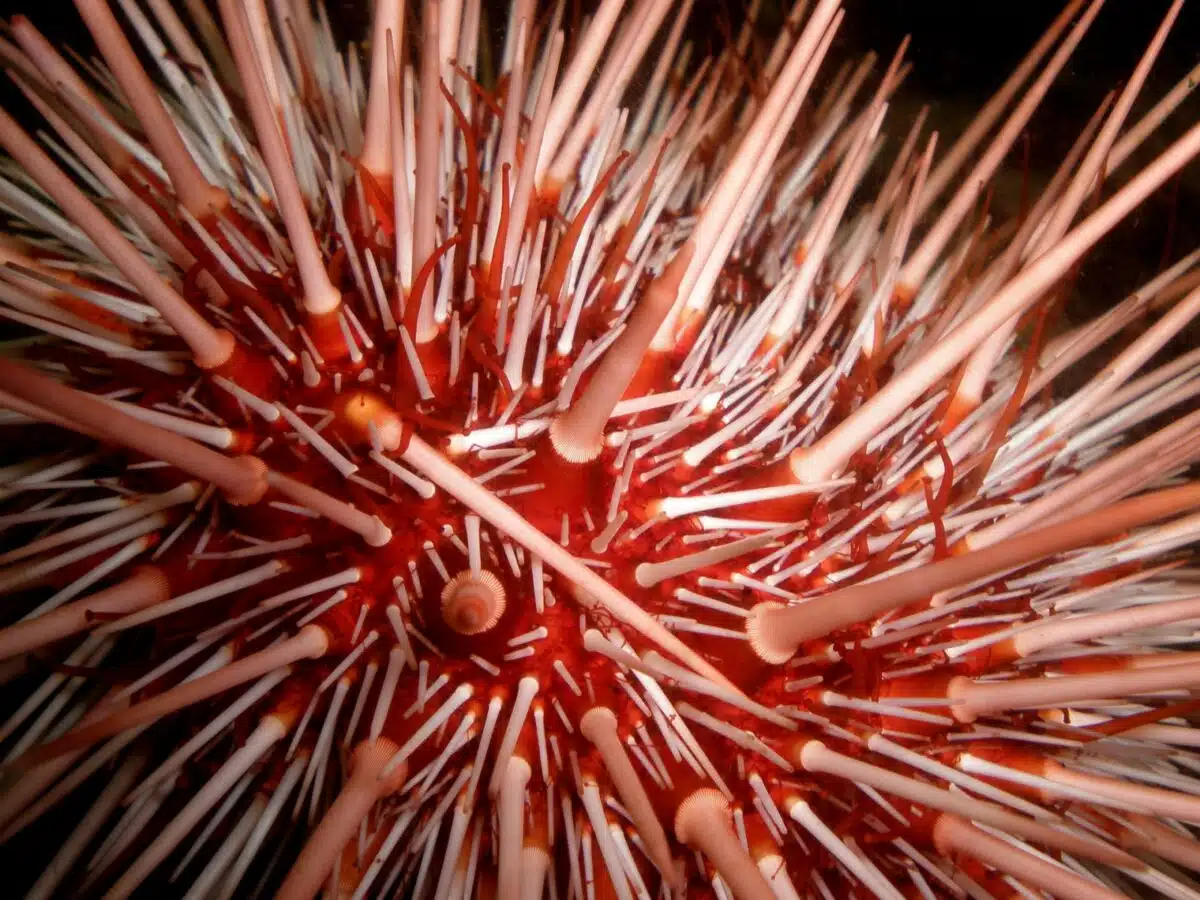Did you know sea urchins may live up to 200 years? There are many mysterious organisms in the world, and sea urchins are one of the most alluring.

Sea urchins are among the world’s unique creatures that live on the ocean floor. They have a vast number of different species that contain various special features.
They are known as little spiny organisms. Today we will discuss them in detail and uncover numerous facts about them.
Thses creaturesare round, small, spiny animals that live in the oceans. Although they are marine organisms, they can’t swim and thus spend their lives on the ocean floor. Sea urchins protect themselves from prey through their hard shells and spines.
Taxonomic Classification
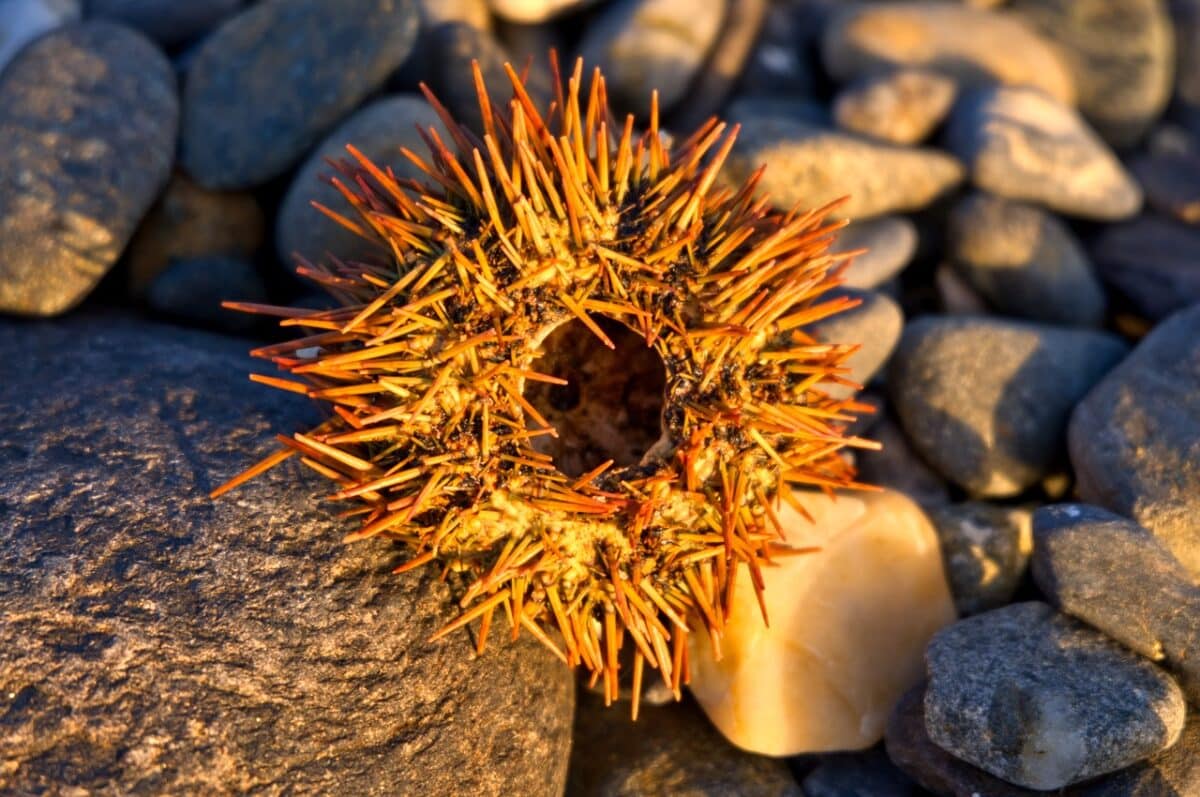
Kingdom: Animalia
Phylum: Echinodermata
Subphylum: Echinozoa
Class: Echinoidea
(Sea urchins also have multiple subclasses and orders, but we’ll get into that another time.)
Common Species
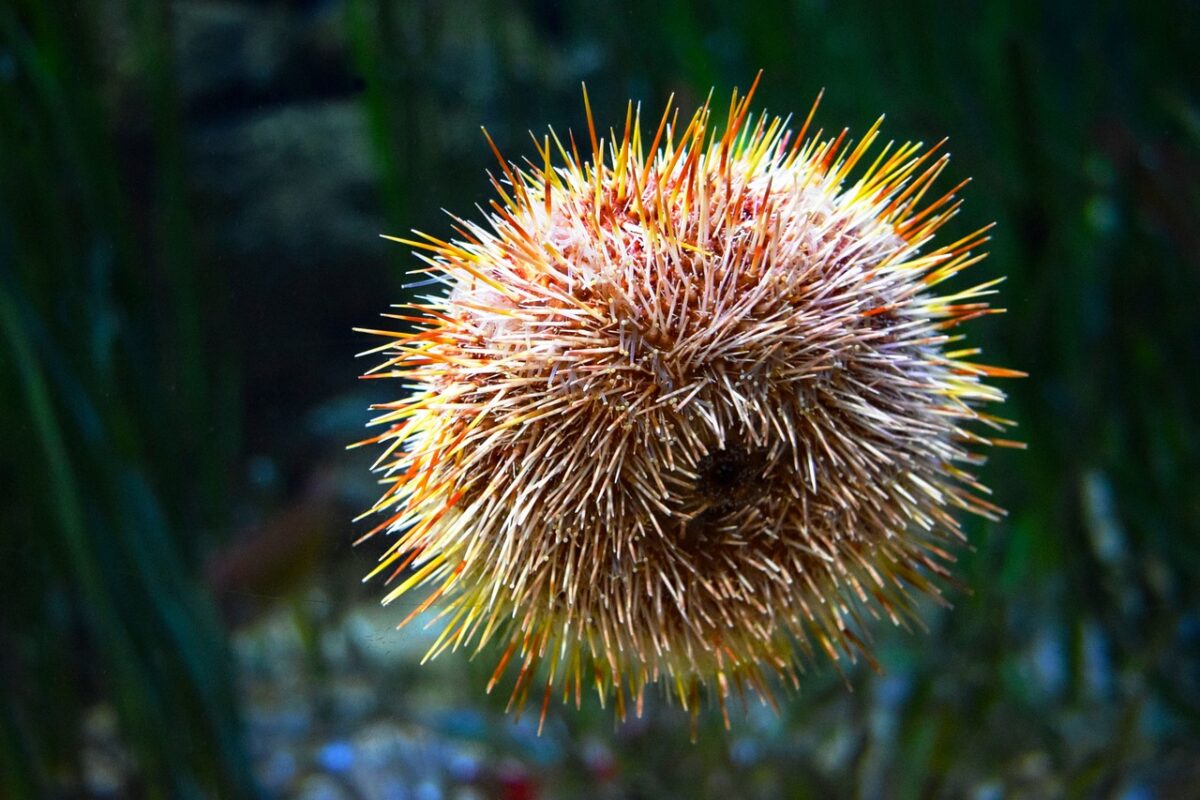
There are 950 species that are widely distributed on all ocean floors. Among all these species, only about 18 are edible.
Out of 950, the most well-known sea urchin species are the following:
- Red sea urchin gonads are edible.
- Pacific purple sea urchin, Paracentrotus lividus, is an important ingredient in uni sushi.
- Green sea urchin spines are not venomous and are also edible sea urchins.
- Echinus esculentus is the European sea urchin found in western Europe coastal areas.
- Diadema setosum has long, hollow, mildly venomous spines.
- Diadema antillarum, also called lime urchin, possesses black spines that are long and hard.
- Tripneustes gratilla, also called collector urchin, is found in the red sea, Indo pacific, the Bahamas, and Hawaii.
- Arbacia lixula is a European sea urchin species commonly called black sea urchin.
- Kina is an edible sea urchin that is endemic to New Zealand.
- Colobocentrotus atratus, also called shingle urchin or helmet urchin, is found on the shores of Hawaii.
- Banded sea urchin is also known by the name “double spined urchin” and possesses venomous spines.
- Tripneustes depressus, also called sea egg or white sea urchin, have harmful toxins.
- Slate pencil urchin controls the algae number and is thus used in aquariums.
Conservation Status
Although they are currently not risking extinction, they are near threatened sea creatures.
Other Names Of Sea Urchin
The name is derived from the Latin ericius (hedgehog), from the old french herichun. They got the name because they resemble sea hedgehogs.
Scientifically they are known by their class name, which is Echinoidea, whereas some other common terms they are known by include;
- Sea biscuits
- Sand dollars
- Sea hedgehogs
History
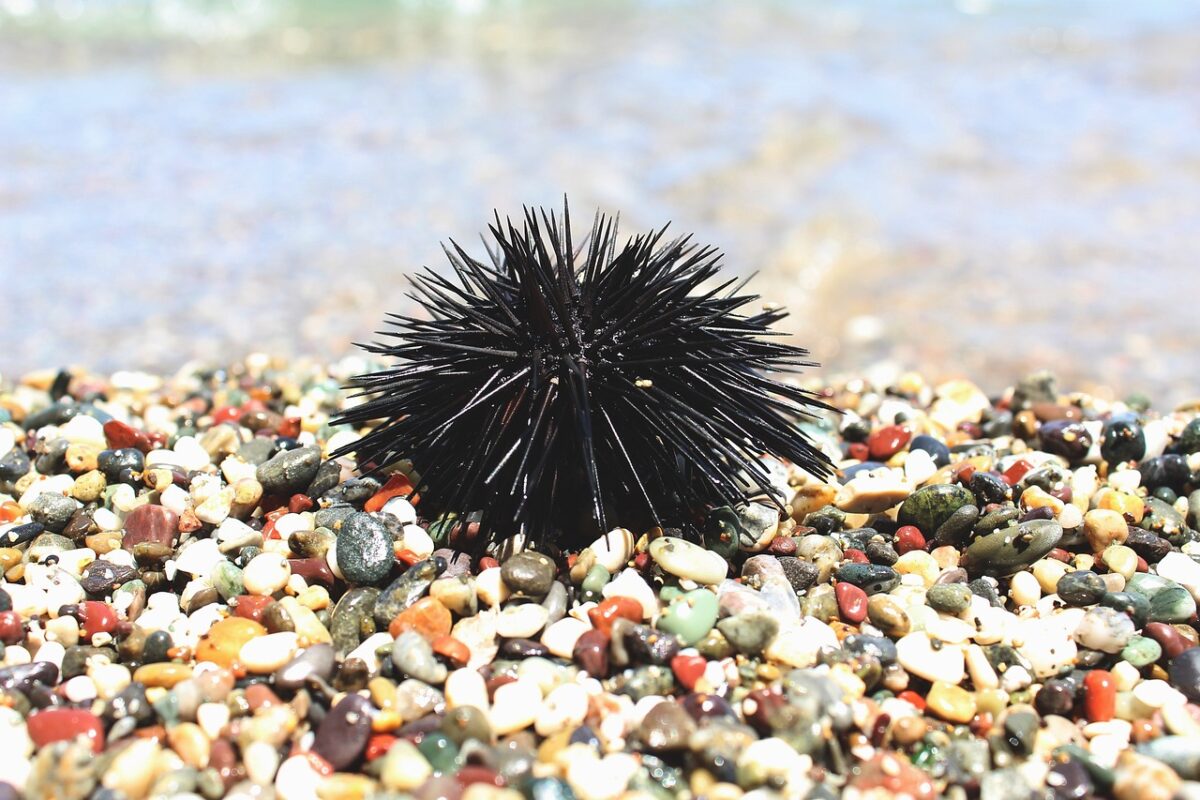
The history of sea urchins shows echinoids date back 450 million years ago, in the Ordovician period.
The closest echinoderm relatives are sea cucumbers, as both are deuterostomes, a clade comprising chordates. Fossil urchins are utilized in the form of protective amulets.
Lifespan
They are unique marine creatures that could, interestingly, live 15 to 200 years in this world. They are among those organisms that could have an extremely long lifespan.
However, the life expectancy of purple sea urchins is around 20 years; this shows that their life duration varies from species to species.
Body
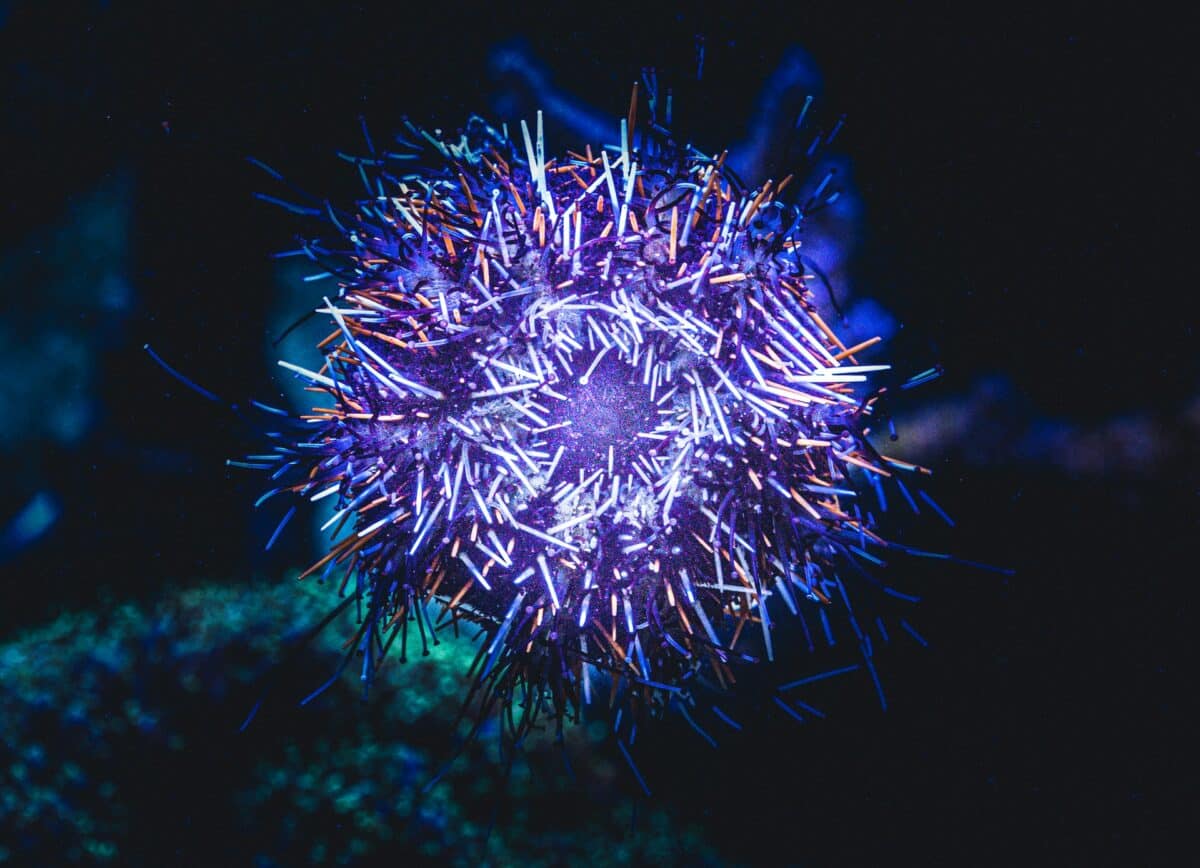
The body of this animal is spherical and rigid, having locomotive spines over the shell called tests. The anus of sea urchins is at the top, whereas the face is located at the base. Therefore, their upper body surface is known as aboral, and the lower body surface is regarded as oral.
Some also contain statocysts in their spheridia, a spherical organ. Statocysts assist the sea urchin in gravitational orientation.
Senses and Nervous System
Although they don’t possess a right brain, a neural center appears as a big ring surrounding the mouth. They are highly sensitive to chemicals, light, and touch.
Appearance
These sea creatures appear in various shapes, and their body is covered with spherical shells surrounded by spines, making them resemble a porcupine. Their small feet that appear in tube shape help them move around the ocean floor.
They appear in different colors, such as green, black, white, orange, purple, yellow, pink, blue, brown, and gray. Sensitive cells are located in their tube feet, spines, around the mouth, and in the pedicellaria.
Weight and Size
Typically they weigh around one pound. But it may vary from species to species. These small ocean creatures range from one inch to 14 inches (3cm to 36 cm).
Locomotion
They possess hundreds of very small adhesive and transparent structures called tube feet which help them move from one place to another.
Distribution
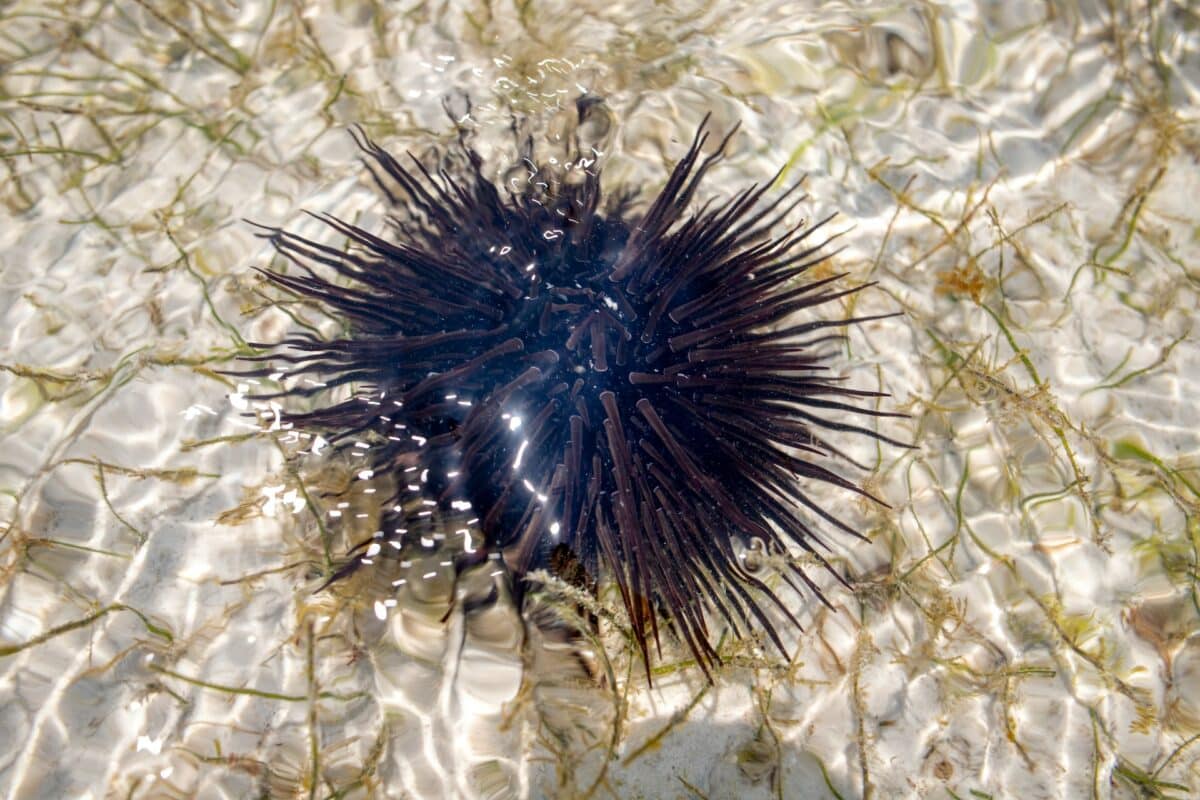
These species are distributed all across the oceans throughout the world. You can find them in the deepest sea trenches or on shorelines, both in tropic, temperate or arctic regions.
Habitat
Their ideal habitats are coral reefs and rocky ocean floors, where they spend most of their time; this is because they can’t swim. Some species, like shingles, inhabit the shallow water near the ocean beaches.
Population
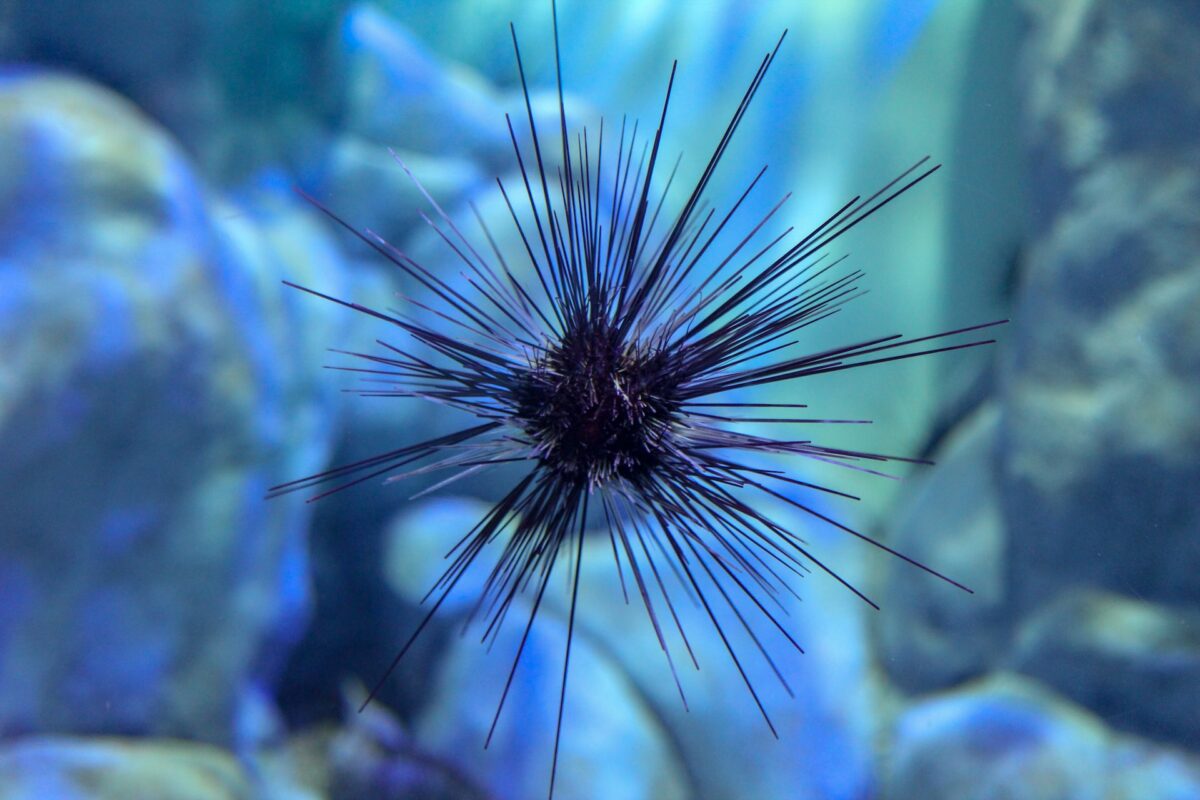
Their population is greatest in tropical and temperate oceans. As there are more than 950 species of this mysterious and spiky sea animal, each species’ population varies greatly.
For example, the population of purple sea urchins is around 350 million on just one Oregon reef. The purple sea urchin population devours the coastal kelp of California. At the same time, the purple sea urchins in the Mediterranean are near threatened.
Their population is affected by various factors, such as fish species that eat algae, the diet of the specific species, and the warming temperature of the sea. In short, the imbalance of the ecosystem leads to a reduction of some species.
Did you know that the purple sea urchin has extraordinary endurance and can remain dormant for many years without eating food?
Diet
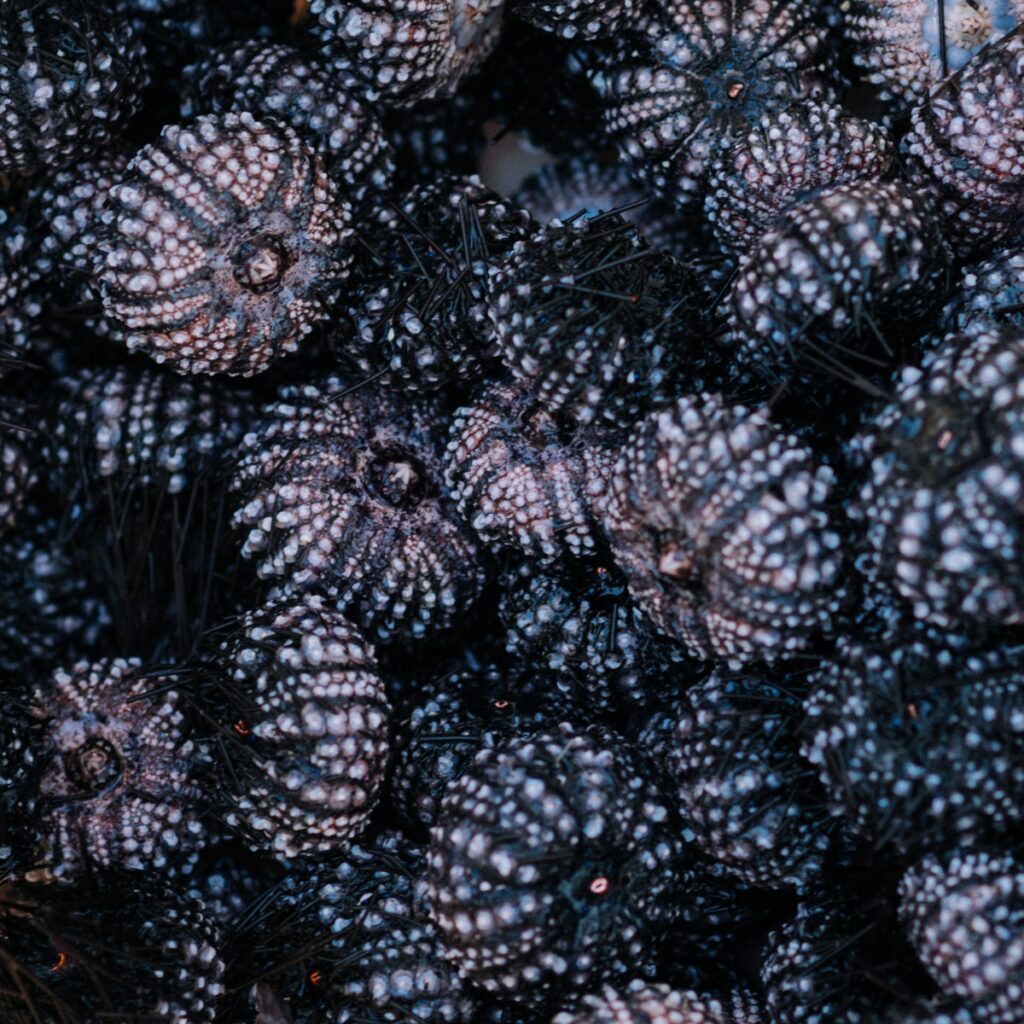
As they are omnivores, they feed on marine vegetation such as kelp and algae. Additionally, they feed on sea sponges, coral, and other sessile ocean creatures.
Predators
They hide from sea otters, lobsters, crabs, birds, and fish because they are their primary predators. In fact, otters in British Columbia play an important role in maintaining the population of sea urchins.
Otters eat the purple sea urchins to protect the kelp forest from destruction. When they eat lots of purple sea urchins, their teeth and bones turn purple.
Prey
The favorite prey of this sea creature are barnacles, fish, and algae.
Diseases In Sea Urchins
These animals also suffer from a number of diseases, like bald sea urchin diseases, which affect many sea urchin species on the California coastline, the Mediterranean Sea, and along the North Atlantic. Two pathogens responsible for causing these diseases in sea urchins are Aeromonas salmonicida and Listonella anguillarum.
Self-Defense Mechanisms
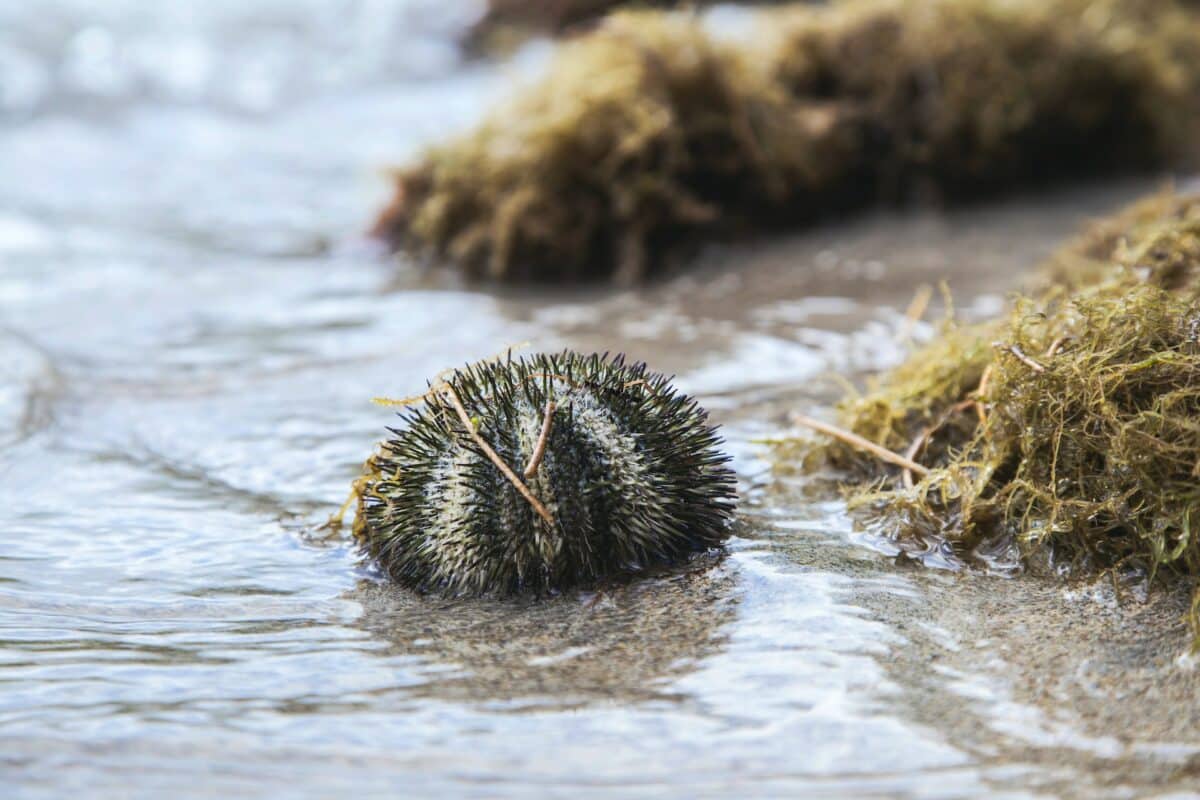
Sea urchins have spines over their bodies that guard them against predators. Some of the species have venomous spines, and these are useful not only to sea urchins but also to shrimps, crabs, and other ocean creatures as they take shelter in these spines for protection from predators.
Pedicellaria also defends sea urchins from ectoparasites; they possess a hemal system that keeps them safe from the endoparasites.
Reproduction Process of Sea Urchins
Sea urchins are dioecious, meaning their male and female sexes are separate. Neither males nor females can be distinguished based on their external appearance.
They reproduce once a year, employing external fertilization. They send lots of eggs and sperm into the water. Once the egg and sperm fertilize, it takes only about 12 hours for the egg to become an embryo from which millions of larvae with cilia form. However, only a small number of them grow into adult sea urchins, which then start living on the seashores.
The time to reach maturity may vary from species to species. For example, the purple sea urchin may reach maturity in three to five years.
Humans and Sea Urchins

#1 Scientific Uses
Humans use sea urchins in various ways, and they have proved beneficial to humans in several aspects. These creatures have been used in developmental biology as model organisms since the 1800s. The causes of using sea urchins as model organisms include their long lifespan, high fecundity, and easy availability.
For studying the cis-regulatory elements, sea urchins are used. Likewise, they are also used to estimate sea acidification, ecological impacts, temperature, and the health and population of sea urchins.
#2 Source of Food
Both males and females have gonads known as corals or sea urchin roe, which are used as food in many parts of the world, especially Japan.
Japan consumes more than 50,000 tons of sea urchins annually, which is more than 80% of the total sea urchin global production. Other than that, sea urchins are utilized in many forms for food purposes.
#3 Folk Tradition
A folk tradition in southern England and Denmark used to imagine the sea urchin fossils as apotropaic symbols. They were thought to be thunderbolts that were able to repel harm by witchcraft or lightning.
Special Characteristics of Sea Urchins
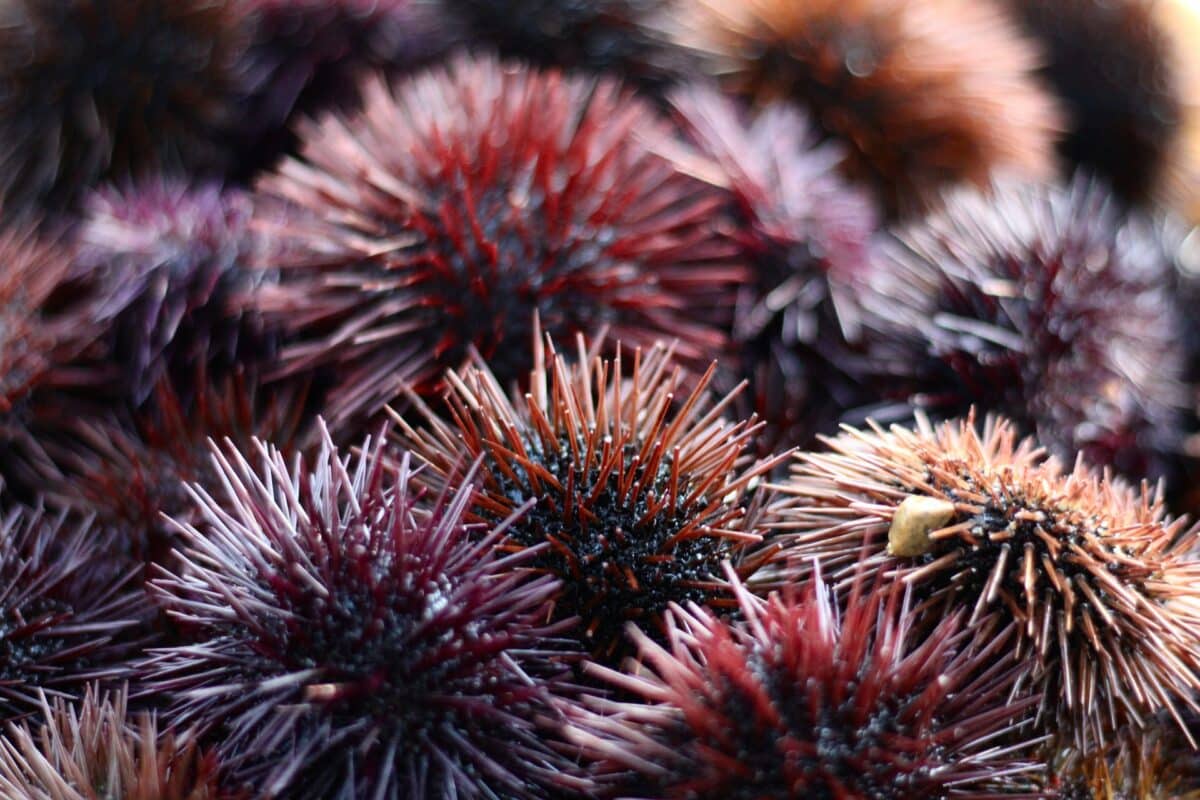
Sea urchins have some characteristics that make them unique ocean creatures. Some of these are mentioned below:
- Most sea urchins have spines, but not all have spines; some sea urchin shells are covered with hair-like structures.
- Sea urchins don’t have separate eyes.
- They have five sets of teeth that regularly replace the material lost through abrasion and self-sharpening.
11 Facts About Sea Urchins That Will Blow Your Mind
Here’s some amazing facts about sea urchins that make them smart and unique ocean residents. These facts are mentioned below.
- A mammal’s body symmetry consists of two sections, whereas the sea urchin’s body has five symmetrical sections.
- The teeth of sea urchins are very strong.
- The carrier crab uses sea urchins as a self-defense mechanism against predators.
- The mouth structure of the sea urchin is unique, so it is nicknamed Aristotle’s lantern.
- If you see a sea urchin, you would not be able to say where their eyes are located, but expert zoologists suggest that the whole body is a compound eye that is sensitive to light. This is why the sea urchins live on the seafloor – to prevent the connection with light.
- Dry sea urchins are covered with a huge number of bumps that resemble beads.
- Various species live in all water temperatures, either cold or warm.
- They don’t have a hard bony skeleton. What they do have, though, is a hard outer shell composed of calcium carbonate, known as a test.
- Among the 950 sea urchin species, the red sea urchin is the largest.
- The reproductive and nervous system of sea urchins is very simple.
- Among all the sea urchins, the flower urchin is the most dangerous.
Frequently Asked Questions
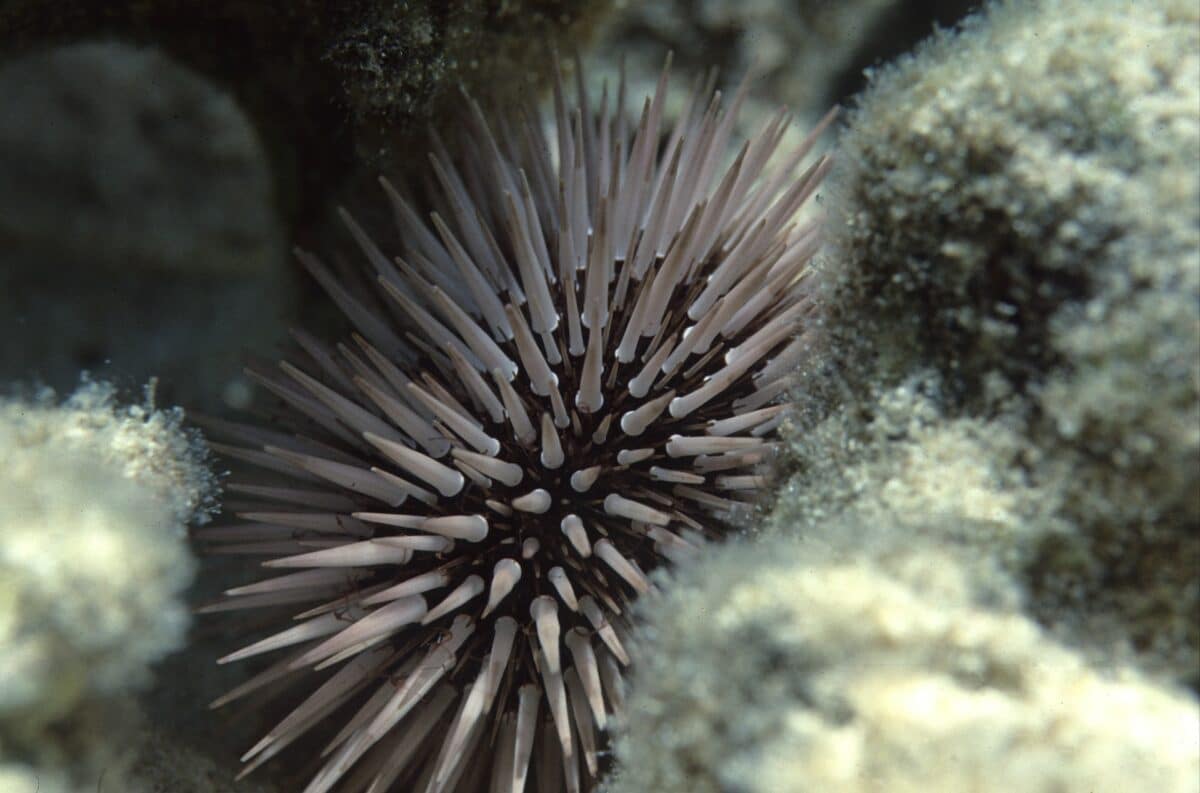
If the spiny hard shell is removed from the sea urchins, it is safe to eat them. The gonads of female and male sea urchins are edible parts.
Yes, it is poisonous to touch sea urchins because they possess two venomous organs in their body: one is the pedicellaria, and another one is the spines. The venom could cause an inflammatory reaction if you touch their spines.
Sea urchins are killed mostly by autoclaved seawater. Because the water becomes lethal and as a result, the sea urchin population in such habitats may reduce drastically.
Although the sting of sea urchins is dangerous, but is not fatal in most cases. Therefore, if you observe any symptoms, it is better to treat them and, if needed, take professional assistance.
Some sea urchins have venomous spines; therefore, their sting causes severe pain, which requires immediate treatment. The affected skin becomes swollen and red. Sometimes their sting also leaves puncture wounds on the skin that appear as blue-black bruises, which can lead to infection.
Toxopneustes pileolus (flower sea urchin) is considered the most dangerous sea urchin. There is a toxin in their pedicellariae and spines, which causes severe pain and possibly paralysis and respiratory problems.
The Bottom Line
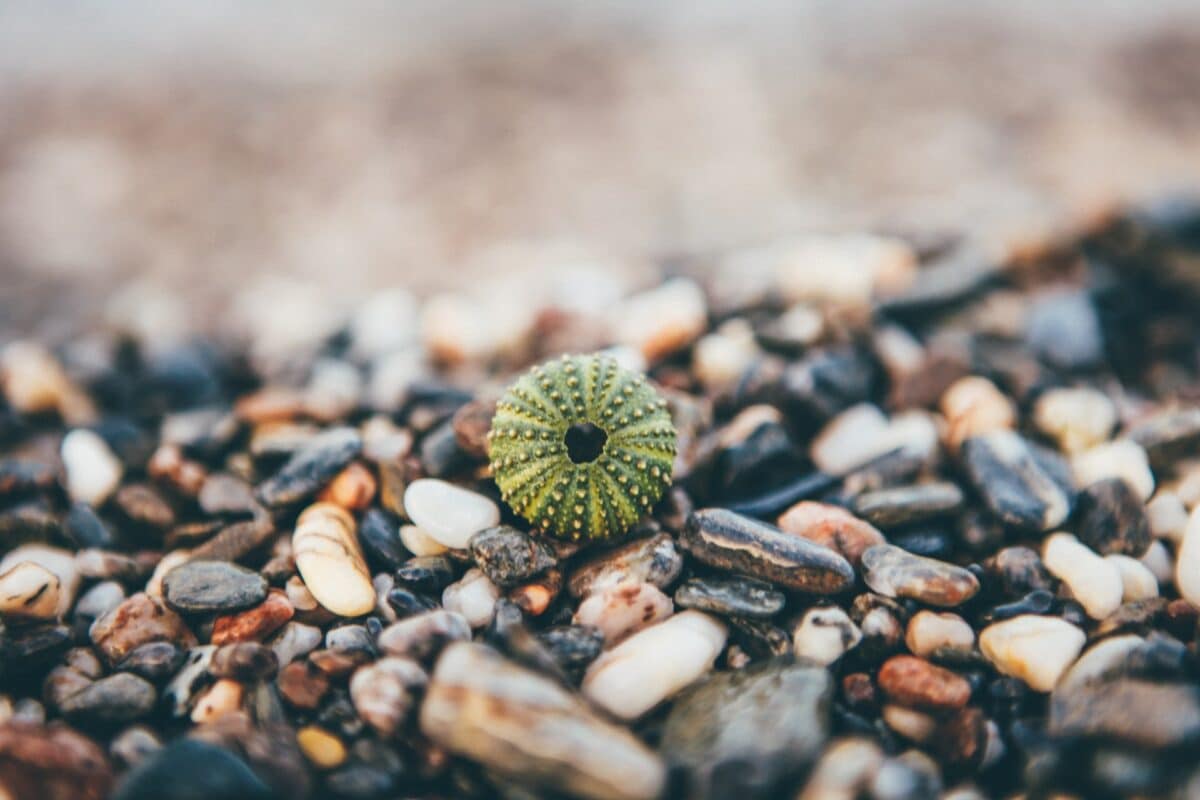
| Sea Urchin |
| They are round, small, spiny animals that live in the oceans. |
| Although sea urchins are marine organisms, they can’t swim and thus spend their lives on the ocean floor. |
| There are 950 species that are widely distributed in all the ocean floors. Among all the 950 species, only about 18 are edible. |
| Although the Sea urchins are not extinct, they are near threatened sea creatures. |
| Scientifically, they are known by their class name, which is Echinoidea. |
| The closest echinoderm relatives are sea cucumbers. |
| Sea urchins are unique marine creatures that could, amazingly, live 15 to 200 years. |
| The body of this animal is spherical and rigid, having locomotive spines over the shell called tests. |
| The gonads of both female and male are edible (in certain species.) |
| Most of them have spines, but not all; some sea urchin shells are covered with hair-like structures. |
| Sea urchins don’t have separate eyes. |
Sea urchins are known for being the most attractive marine creatures, with a number of special qualities that make them different from the rest of the organisms.
There are more than 950 sea urchin species worldwide; out of them, only 18 are edible. It is only their gonads that are used for food. They also have shells covered with venomous spines, protecting them from predators.
Furthermore, they are mainly found on the ocean floor, but some sea urchins also occur on the shores. Their species is not risking extinction quite yet, but they are near threatened. This is because the imbalance in the ecosystem significantly affects these cute marine creatures.
Thank you for reading this article! If you feel like uncovering more mysterious species that live in the depths of our oceans, take a look at our piece on the Drum Fish.
Join our Forum for free today!


